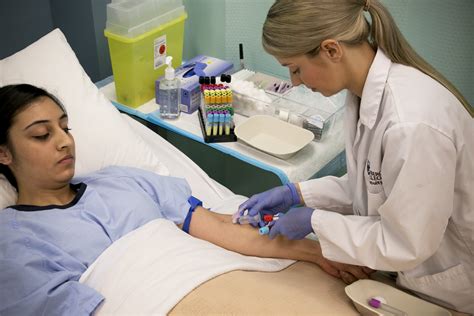How too Earn your Certification to Draw Blood: Essential Steps for Healthcare Professionals
If you’re a healthcare professional aiming to expand your skill set, obtaining certification to draw blood is an invaluable credential. Not only does it enhance your employability, but it also ensures you’re adhering to safety standards and providing quality patient care. This extensive guide explores the step-by-step process to earn your phlebotomy certification, the benefits of being certified, practical tips, and real-world insights to help you succeed.
Introduction
Drawing blood-the diagnostic procedure known as venipuncture-is a fundamental component of patient care in many healthcare settings, including hospitals, clinics, and laboratories. As a healthcare professional, becoming certified in phlebotomy not only builds your confidence but also demonstrates your competence and dedication to patient safety.
So, how do you get certified? What are the essential steps involved? In this article, we will walk you through the certification journey, from understanding eligibility requirements to passing the exam and gaining practical experience. Whether you’re a nursing assistant, medical assistant, or aspiring phlebotomist, this guide will serve as a valuable resource to kickstart your path towards professional certification.
Understanding Certification Requirements
Who Can Become Certified to Draw Blood?
Most certifying bodies require candidates to meet certain prerequisites before they can register for the certification exam. Common eligibility requirements include:
- Minimum age of 18 years old
- High school diploma or GED
- Completed a formal phlebotomy training program
- Background check and immunizations (varies by state and institution)
Key Certifications and Accrediting Bodies
Several professional organizations offer accredited certification programs for phlebotomists, including:
- American Society for Clinical Pathology (ASCP)
- National Healthcareer Association (NHA)
- American Medical Certification Association (AMCA)
- American Society of Phlebotomy Technicians (ASPT)
Choosing the right certification depends on your career goals, location, and employer preferences. Verify the credibility and recognition of the certifying body before enrolling.
Steps to Earn Your Blood Draw Certification
1. Complete a Certified Phlebotomy Training Program
The first crucial step is enrolling in an accredited phlebotomy training course. Many community colleges, vocational schools, and online programs offer these courses.
- Curriculum Content: Anatomy, physiology, infection control, patient interaction, and venipuncture techniques
- Duration: Varies from a few weeks to several months
- Hands-On Practice: Critical for building confidence and skill
2. Gain Practical Experience
Most certification programs include a practical component, where you perform venipuncture under supervision. Some programs also offer externship opportunities in medical settings.
| Experience Area | Details |
|---|---|
| Number of draws | Typically 50-100 supervised venipunctures |
| Setting | Clinics, labs, hospitals |
| Skills practiced | Patient positioning, site selection, collection techniques |
3. prepare for the Certification exam
Most certifying agencies provide study guides,practice tests,and online resources. Focus on:
- Understanding anatomy and physiology related to venipuncture
- Knowledge of infection control procedures
- Patient interaction and communication skills
- Equipment handling and safety protocols
4. Pass the Certification Examination
After readiness, register for the exam. The test typically comprises multiple-choice questions covering all aspects of blood collection, safety, and patient care. Upon passing, you become a certified phlebotomy technician.
5.Maintain certification and Continue Education
Most certifications require renewal every 2-3 years, which may involve completing continuing education credits and maintaining good standing. Staying updated on best practices ensures ongoing competence and employability.
Benefits of Becoming a Certified Blood Draw Specialist
- Enhanced Employability: Many healthcare employers prefer or require certified phlebotomists
- Increased Confidence: Skills validated through certification boost self-assurance
- Better Patient Care: Proper technique minimizes patient discomfort and improves accuracy
- Career Advancement: Certification can lead to higher-paying positions and specialization opportunities
Practical Tips for Success
- Choose an accredited program: Ensure the training meets industry standards
- Practice diligently: Hands-on experience is key to developing proficiency
- Study thoroughly: Use practice tests and study guides provided by certifying bodies
- Stay organized: Keep track of certification expiry dates and continuing education requirements
- Prioritize patient safety: Always adhere to aseptic techniques and safety protocols
Case study: From Student to Certified Professional
Sarah, a medical assisting student, decided to pursue phlebotomy certification. After completing her training at a community college, she accumulated over 100 supervised venipunctures. she prepared diligently using practice tests provided by her program and passed her certification exam on the first attempt. Today, Sarah works in a hospital laboratory, performing blood draws confidently and contributing to accurate patient diagnoses. Her journey highlights that with dedication and proper training, earning blood draw certification is a rewarding achievement that opens the door to numerous healthcare opportunities.
First-Hand Experience and Practical Insights
Getting hands-on experience is irreplaceable. when you start performing venipunctures, remember:
- Always verify patient identity before proceeding
- Explain the procedure to ease patient anxiety
- Choose an appropriate site with proper anatomy
- Apply proper tourniquet techniques without causing discomfort
- Handle needles and sharps with caution
- Dispose of all sharps and biohazard materials responsibly
Reflecting on each experience helps refine your technique and builds confidence, ensuring a safe and efficient blood collection process.
Conclusion
Obtaining certification to draw blood is a critical step toward advancing your healthcare career. By following the necessary educational, practical, and examination steps, you can become a competent and certified phlebotomy technician. Remember, dedication, proper training, and a focus on patient safety are the cornerstones of success.Whether you’re just starting in healthcare or looking to specialize further, earning your blood draw certification not only benefits your professional growth but also enhances patient care quality. Embark on this rewarding journey today, and open doors to new healthcare opportunities!
